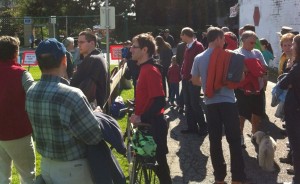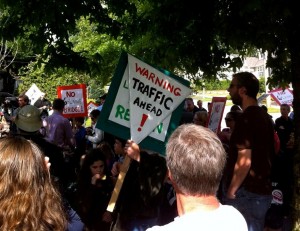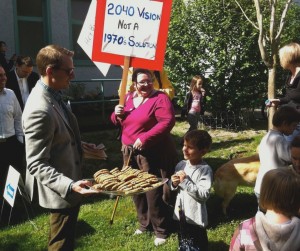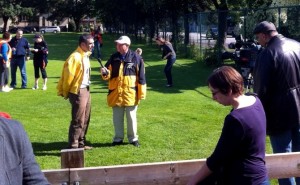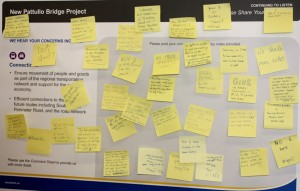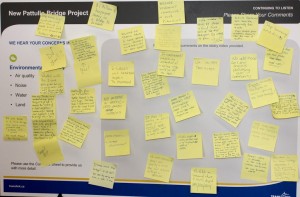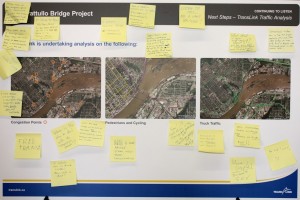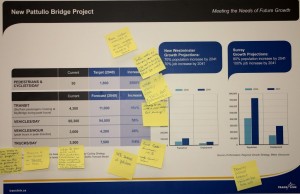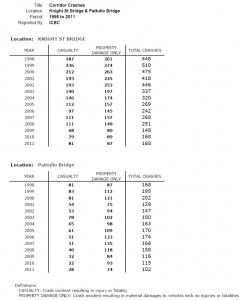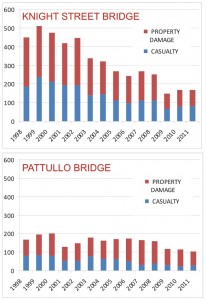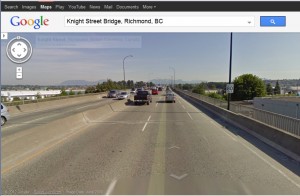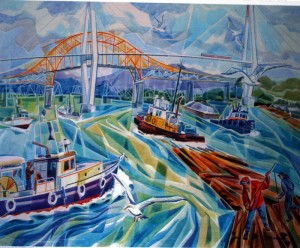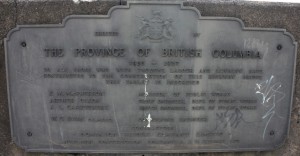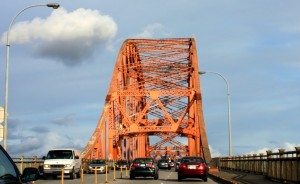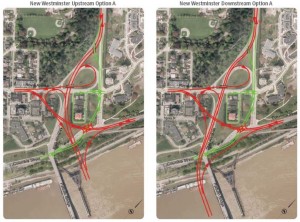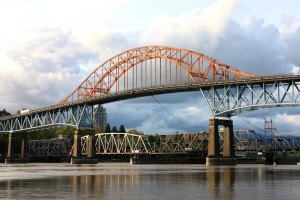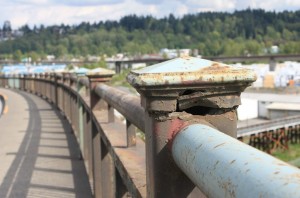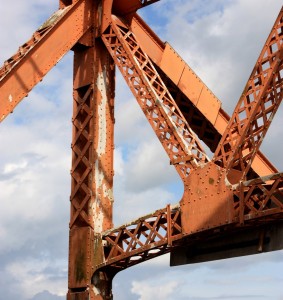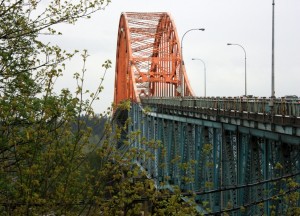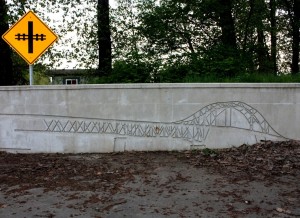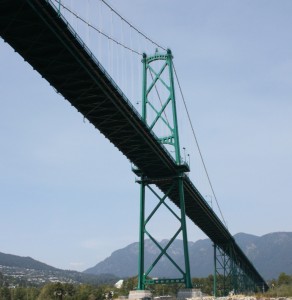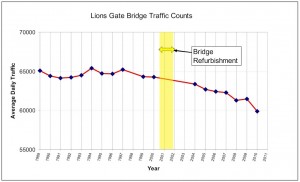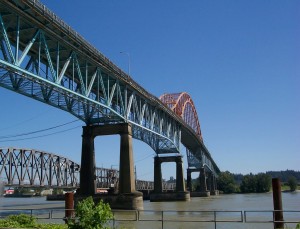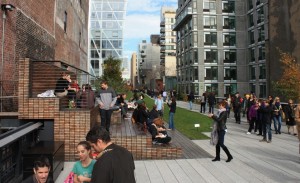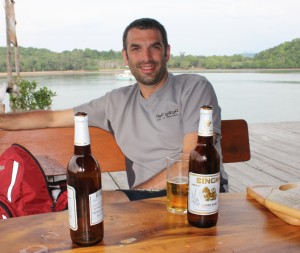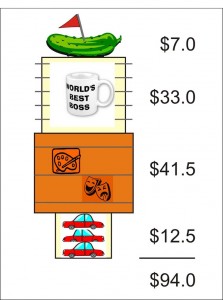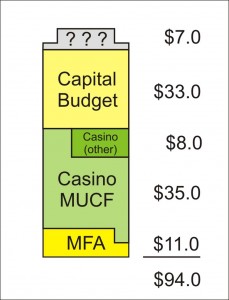I’ve been thinking a lot about representative democracy lately.
It is easy to feel, to quote Kent Brockman, “Democracy just doesn’t work”, when you are an Environmental Scientist and you watch Stephen Harper systematically destroy Science and the Environment.
Ms. NWimby, once again, is the voice of reason, and is only incredulous at my incredulity about how far the Harper Government has gone, and how fast. “What did you expect?” she says, “He’s doing what he was elected to do.”
Is this what he was elected to do? In theory, we elect a government to lead by setting policy that is well informed, balances needs, and achieves the goals that the people want to see achieved. (Idealist, yes, but stick with me here). The alternatives are to run a populist party (give the people what they want, whether it is good for the nation or not) or an ideological party (one based on a set of rigid principles that cannot be bent for any reason regardless if the results are what was intended, damn the facts ).
If you listen to Reform Party Strategist Stephen Harper, he was all about people wanting open, accountable government, and all he wanted to do was make Ottawa follow the will of the “the people”. Reform were the ultimate populists when he was drawing up policy in the 80s.
But he isn’t a populist now, and it is pretty clear that his decisions are not made out of a desire to develop good effective policy based on the best science or analysis of the situation. You cannot do that and at the same time cut yourself off from information.
That leaves ideology, and he has, at least since taking power in 2006, worn his ideology on his sleeve: business good, taxes bad. “European-style socialism” the worst. He hates all forms of communism except the profitable Chinese style. He is an open admirer of the United States, and sees the current slow disassembly of their civil society as path Canada would be well served to follow. (<—opinion)
So we shouldn’t be surprised, nor should we expect him to change course even if all of the doctors in the country protest his position on health care for refugees, if all the scientists in the country gather at the gates crying about the death of evidence, when a group of former Conservatvie minsters line up decry the decimation of environmental laws. He wasn’t elected to represent health care professionals, scientists, former Ministers, evidence, or even public opinion. He was elected to support his openly expressed ideology.
Everyone was so worried about Harpers “hidden agenda” that the weren’t paying attention to his declared agenda. And here we are.
So although I disagree with almost every position Harper has taken, and lament the loss of science and data the future leaders could have used to guide good policy, I cannot blame him for doing it. It is his job in representative democracy, and he was elected by us, knowing that was what we were getting. Shame on us.
What I can criticize him for is showing no respect for the electoral system through which he receives his mandate. It is clear there was, at the very least, a systematic dirty tricks campaign during the last election. It was probably not enough to change the overall result, but enough to demonstrate a profound institutional disrespect for the ballot box within the Conservative party.
Again, we should perhaps not have been surprised, as when it was clear the electorate was ready to turf the conservatives from office a few years ago, he prorogued parliament over the Christmas break when it would create the least fuss. Technically, this was not illegal according to parliamentary law, but it was a serious violation of the spirit of parliament, the spirit of representative democracy, and a shitty thing to do.
But I’m getting pretty tired of pulling my hair over the Federal Conservatives. They are a bunch of jerks. Time to move past and make best. However, there have been a couple of recent events in New Westminster that may better relate to this tension between popularity and ideology, and the spirit of representative democracy.
I haven’t said much about the Elizabeth Fry development in Sapperton. I think Will Tomkinson covered the topic very well for 10th to the Fraser, and outlined effectively the political quagmire that it became.
I think this is a situation where there was lots of blame to go around for it becoming such a difficult situation.
The Lower Sapperton neighbourhood took a strong position against EFry, but didn’t seem to have time for any compromise. Nothing wrong with having a strong opinion, and they ran quite a campaign, but they really had a hard time defining exactly what their main issue was. Yes, they sounded “NIMBY”, but their message was confused by using a whack-a-mole technique or issue raising. They were apparently concerned about crime, parking, shadowing, commercialization, the integrity of the OCP, parking, Kelly Ellard, noise, parking…
EFry, on their own account, did not make a strong public case to directly address the concerns raised by the neighbourhood. Whether they felt the concerns were legitimate or not, an OCP amendment is a BIG DEAL, and they needed to go the extra mile to try to get a number of neighbours on board. No doubt EFry does good work, and area vital part of the social fabric of a community, but there is also no doubt the programs they offer have less favourable impacts, and their decision to develop in a way that challenged the OCP should fitfully come with responsibilities to meet the spirit of the OCP in neighbourhood impacts, even if you don’t meet the letter of the OCP. Hopefully, EFry will take this opportunity to prove their detractors wrong and become the best neighbours that Lower Sapperton could have.
That is all past now, the only question left is: what is Council’s responsibility here? There is little double the majority of lower Sapperton residents opposed the EFry application. There is also little doubt that the vast majority of delegates at the marathon council meetings (at least those who do not work at EFry or use their services) were opposed to the project. If you are the type who thinks Council’s role is to represent the whim of the majority on every topic, then clearly they made the wrong choice.
There are at least two other sources of information that Councillors can use in deciding how to vote: information and ideology.
As I said, I was only a passive observer of the events around EFry, but it is possible that council were convinced by evidence that the programs are so needed, that the overall good of the community will be so well served by having them, and the impacts on lower Sapperton can be so mitigated, that they were compelled by the evidence to approve the project in spite of public outcry. That is an important part of representative democracy – electing someone with the foresight and leadership skills to do what is best for the “Greater Community”, even against hyper-local, short-term, or uninformed opposition.
I don’t know if this was the case in the EFry situation, I’d like to think so. However, I think it is safe to say that the other “i” did have a role in how council made the decision.
Without picking names, some of the members of New West Council have ideological positions that they wear on their sleeves as proudly as Stephen Harper wears his. You can call it socialist, or Marxist, or liberal (all terms that can complimentary or pejorative), and you either like them or dislike them for this very positions. Simplified, it is the idea that Government has a role in improving the lives of people, especially those on the margins of society. Like it or not, council candidates that espouse this opinion do very well in local elections. They do not hide this ideology, and they get elected, suggesting that representing that ideology is part of their mandate in Council. When called on to demonstrate leadership against possible public backlash, that is the mandate they have to fall back upon. Really, that is the “representative” part of democracy.
Was The EFry decision based on information or ideology? I don’t know, as I didn’t follow the case that closely. I suspect it was a little of both.
There is another decision that may not have (yet) received the vocal public backlash of EFry, but speaks to mandates and democracy: the MUCF funding and James Crosty’s burgeoning campaign to force a referendum on the issue.
I should say, I am generally in favour of the MUCF. As much as I would have liked the office tower to have been built with private money, I understand the position Council was in when the development deal fell through. I share their opinion that the building is too important to the ongoing renaissance of Downtown to let it fail. With the promise of Class-A office space on top of a SkyTrain line, a central location in the region, and the sweet terms the City can negotiate from the Municipal Finance Authority makes the business rick seem pretty minuscule.
However, the Community Charter creates some pretty specific rules about how Cities manage their finances. One rule is that any Municipal Council cannot borrow money for any term longer than 5 years without a specific mandate of the populace, unless for a prescribed purpose. This sensibly limits any one Council from forever indebting a City, before an election can come along and the teeming masses can toss them out.
So if your City needs to borrow, say $59million over 20 years, they are to seek a mandate from the populace, the most obvious way of doing that is through a referendum.
Cities are reluctant to hold referenda every time they have a long-term project, especially in the anti-tax anti-risk financial era in which we currently reside. Referenda are a hassle, expensive to run, and limit the ability of Councils with specific mandates (be they based on information, ideology, or both) from getting things done. So a City can take the opposite tack: assume everyone agrees unless they take effort to oppose it, kind of a “reverse-billing” referendum. And that is where we are at today in New Westminster, much to James Crosty’s chagrin.
This is not the first time the City has done this reverse-billing thing, and it is not even the first time I have raised an issue about it, but I clearly don’t have the issue-raising prowess of James Crosty.
I’ve said it before, and I will say it again: the current system of putting notice to the public and asking them to, essentially, fill out a ballot if they oppose the lending, is a legitimate one under the Community Charter, but (and I strongly agree with Crosty here), the City is going about this in a crappy way.
The City has put a couple of notices in the City page of the local newspapers, buried between local zoning variances, park events, and safety notices. There are a few thousand words of random legalese, which very few people are likely to read, followed by an invitation to come to City Hall during business hours, read a six-page legal form, then fill out a form, declaring your opposition. A mandate for opposition requires 4,500 individual electors to each come to City Hall during a one-month period in the middle of the summer (a usual dead zone for public consultation).
Demonstrating that this is not a true referendum, there is no funding for organized opposition to the initiative, nary is there time to get one organized in the middle of summer. In fact, according to Crosty, the City will not even provide and adequate number of the 8×11 sheets required to be filled out for any such group who wished to organize around it. If anyone wants to go to the Quayside or to Royal Centre and try to sign up electors, actually spread the word to the electorate who may oppose the long-term borrowing of $59 Million (almost $2000 per taxpaying household) they need to self-fund, and then print their own ballots!
Council only had one meeting between when these notices entered the local papers and when the “voting period” closes, and when Mr. Crosty attended that council meeting to raise these issues, he was (according to Crosty… and the streaming video evidence is not around to counter his claims) cut off after a short period of time, and was denied the opportunity to have his concerns addressed by Council or by Staff in a public forum –the only public forum available for a private citizen to raise concerns about this “referendum”.
You can be for or against the MUCF; with or against the current council: it really doesn’t matter what your ideology is on this one. This is a crappy run-around referendum that surely fits the letter of the Community Charter, but clearly violates the spirit of the Charter.
